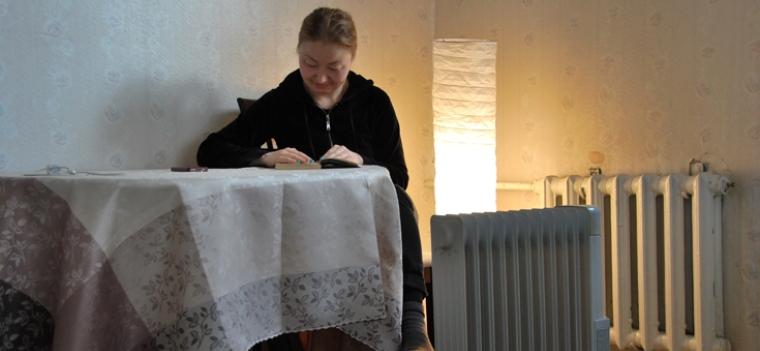News
- An urban heating assessment supported by ESMAP recommended options to improve the sector in the Kyrgyz Republic.
- A new US$46 million World Bank project is now financing implementation of these options, aiming to benefit more than 200,000 people across the country.
- ESMAP also helped to mobilize an additional US$4 million in co-financing for energy efficiency improvements in public buildings from the Government of Switzerland.
The Kyrgyz Republic’s cold climate and long winters make access to reliable and adequate heating supply critical for people’s well-being, livelihoods, and the operation of daily public services. But that need is often not met.
Access to district heating (DH) is limited to about 17% of the 1.1 million Kyrgyz households, mainly located in Bishkek and other urban centers. Financial constraints in the sector have resulted in poor maintenance of the aging infrastructure, low service quality, and high energy losses with increasingly common network breakdowns.
To help the government identify viable heating options, priority investments and policy measures needed to tackle these challenges, the Energy Sector Management Assistance Program (ESMAP) partnered with the Central Asia Energy Water Development Program (CAEWDP) to produce the Heating Assessment for the Urban Building Sector in the Kyrgyz Republic.
Specific recommendations from this assessment have helped design the recent World Bank Heat Supply Improvement Project, a $46 million endeavor to improve the lives of more than 200,000 people in Bishkek with better and more reliable heating.
“Access to reliable and adequate heating is critical for the wellbeing of Kyrgyz people,” says Bolormaa Amgaabazar, World Bank Country Manager for the Kyrgyz Republic. “The situation in the heating sector requires urgent measures, and we are glad to support the Kyrgyz government in its efforts to address the challenges that this vital sector is facing.”
The project focuses on three critical areas: i) reducing heat losses and improving the quality of heat supply to urban households in Bishkek; ii) promoting the use of efficient and clean heating stoves in low income households; iii) and improving energy efficiency in public buildings.
To reduce heat losses and improving the quality of the DH system in Bishkek, ESMAP and CAEWDP supported the state-owned district heating utility in developing a prioritized investment plan to be implemented under a US$31 million component in the project.
Another $5 million is allocated for scaling up the use of efficient and clean heating stoves among 14,000 poor urban and rural households with no access to the DH system. Among those households, approximately two-thirds use traditional solid fuel-fired heating stoves or boilers. These stoves are highly inefficient and polluting, requiring households to spend an average of 45% more money on fuel. The resulting indoor air pollution negatively impacts health, especially for women, children, and the elderly, who spend more time at home.
A pilot on efficient and clean stoves supported by ESMAP and CAEWDP provided critical inputs for the design of this $5 million project component. The pilot supported the development of new stove technologies that help households to save fuel by more than 50% and reduce harmful emissions by 90%. These technologies were tested in more than 70 low-income households with very high satisfaction levels (some beneficiaries even referred to them as “magic stoves”).
The project also tackles the energy performance of public buildings through a US$10 million component. Aging infrastructure, lack of maintenance, and the absence of proper insulation result in high heat losses and low comfort levels in many buildings. This severely impacts the learning, recovery, and working environment in places such as public schools and hospitals. ESMAP has helped validate the high energy efficiency potential in the public buildings that will be rehabilitated under the project, and has helped mobilize an additional US$4 million in co-financing from the Government of Switzerland for the preparation and implementation of energy efficiency improvements under the project.
